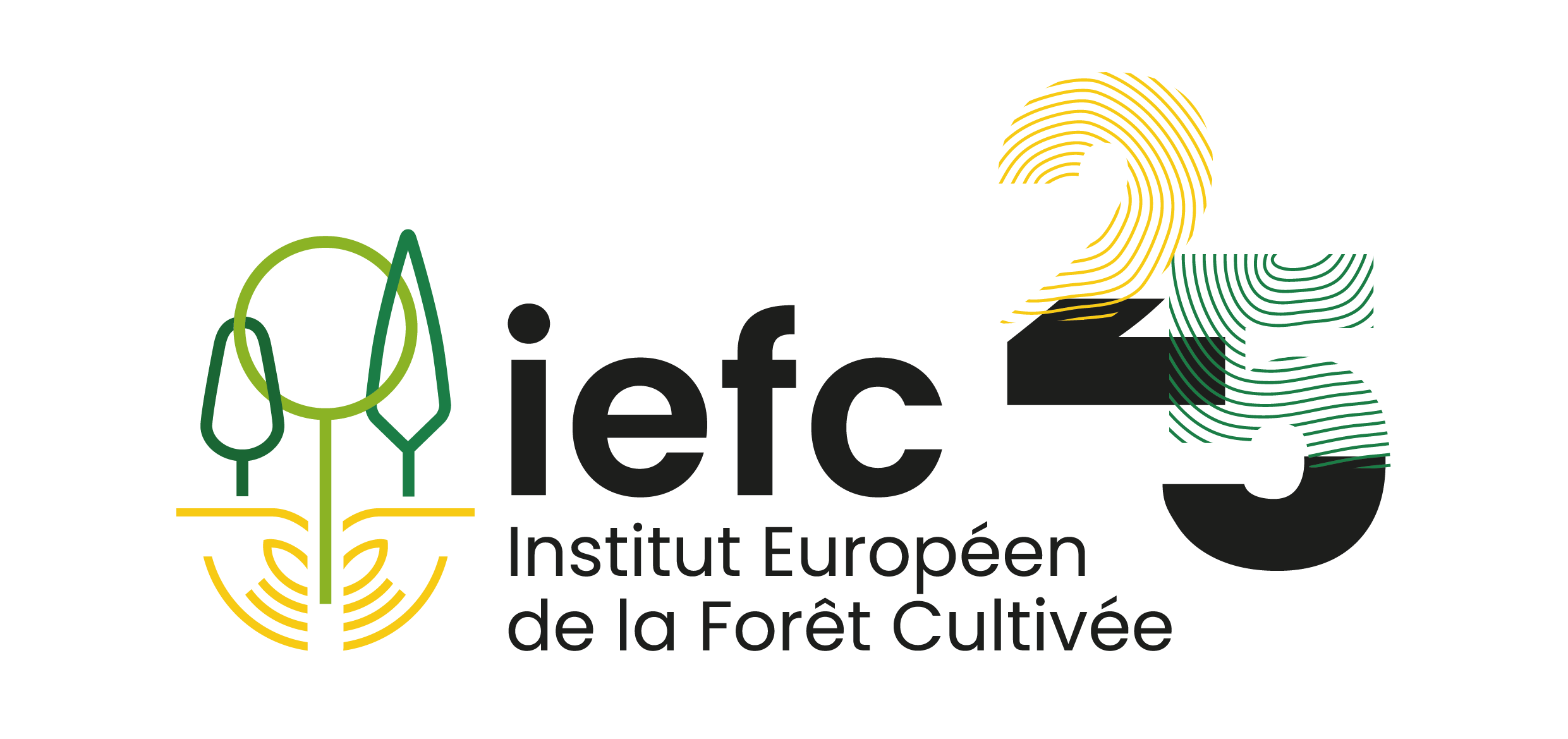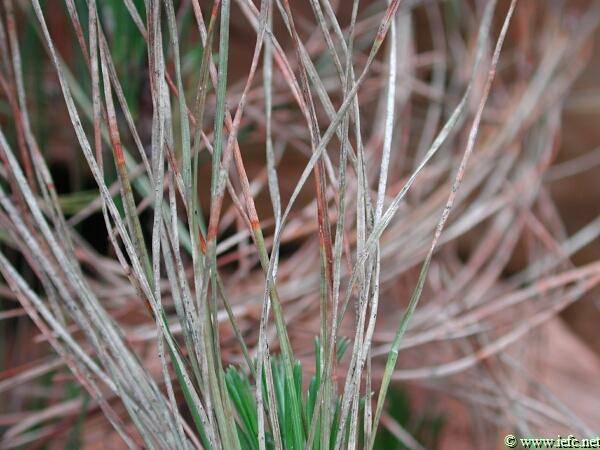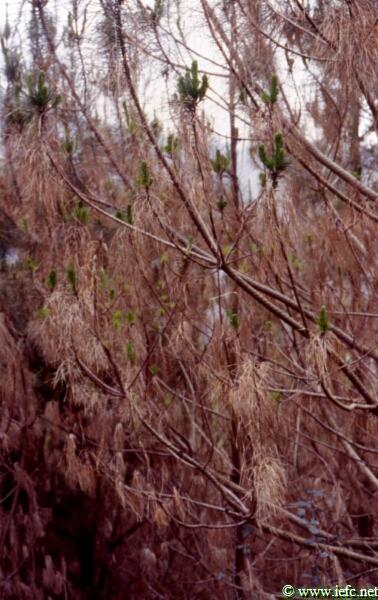Brown spot needle blight
Mycosphaerella dearnessii (Ascomycota, Dothideales).
synonym: Scirrhia acicola, Dothidea acicola, Oligostroma acicola, Systremma acicola
Asexual form: Lecanostica acicola
Lecanosticta needle blight
Host tree
Potentially all pine species are hosts. Most susceptible hosts are: Hybrid pine (Pinus attenuata x radiata), Long leaf pine (P. palustris), Monterey pine (P. radiata), Knobcone pine (P. attenuata), Christmas trees in USA (P. sylvestris and P. ponderosa). This fungus is also described on Aleppo pine (P. halepensis), Black pine (P. nigra), Stone pine (P. pinea), Mountain pine (P. uncinata), Loblolly pine (P. taeda), Mugo pine (P. mugo) and Maritime pine (Pinus pinaster) but attacks are not severe.
Identification
- Symptoms appear on older needles (more than one year old), in the form of yellow spots which later become dark-brown (Photo 1).
- Infected needles show well delimited areas: a desiccated apex and brown spots in the middle whereas the base of the needle remains green (Photo 2).
- Finally, the whole needle turns brown and falls prematurely (Photo 3 and 4).
- Symptoms develop often abundantly at the base of the tree.
- Symptoms are visible all year, but most clearly in spring and summer.
- Confusion is possible with symptoms of Red band needle blight (Dothistroma septospora) so that laboratory identification is required for confirmation.
Damage
- Seedlings and young plants can die after repeated defoliation.
- Discoloration and fall of needles causes growth reduction.
Biology
- On the infected needles asexual spores (conidia) are produced all year under humid conditions. These spores are dispersed as splashed with the rain, which is the main source of infection, although they are also transported over longer distances by insects or pruning tools.
- Infection can occur over a wide range of temperatures, but it is most rapid between 21°C and 30°C.
- Spores penetrate via stomata the youngest needles, which are more prone to infestation.
- The fungus mycelium remains in the needles for one or two years. Infected needles fall from autumn to early winter; defoliation can even continue until the next spring in case of particularly severe attacks.
Risk factors
- High stand density.
- High relative humidity and high temperatures, rainy weather.
Pest management
Preventive measurements
- Avoid planting susceptible tree species in sites with high humidity and high temperatures.
- Avoid high stand densities.
- Avoid pruning or other cultural practices when foliage is wet.
- Locate nurseries in well drained places.
- Destroy strongly infected needles or pines by burning them if possible. However, this is very dangerous in dry areas and it is not allowed in Portugal.
- Use seeds from resistant trees, which are already available for Pinus palustris.
Curative control
- There are no fungicides registered in Portugal, France or Spain against this disease.




